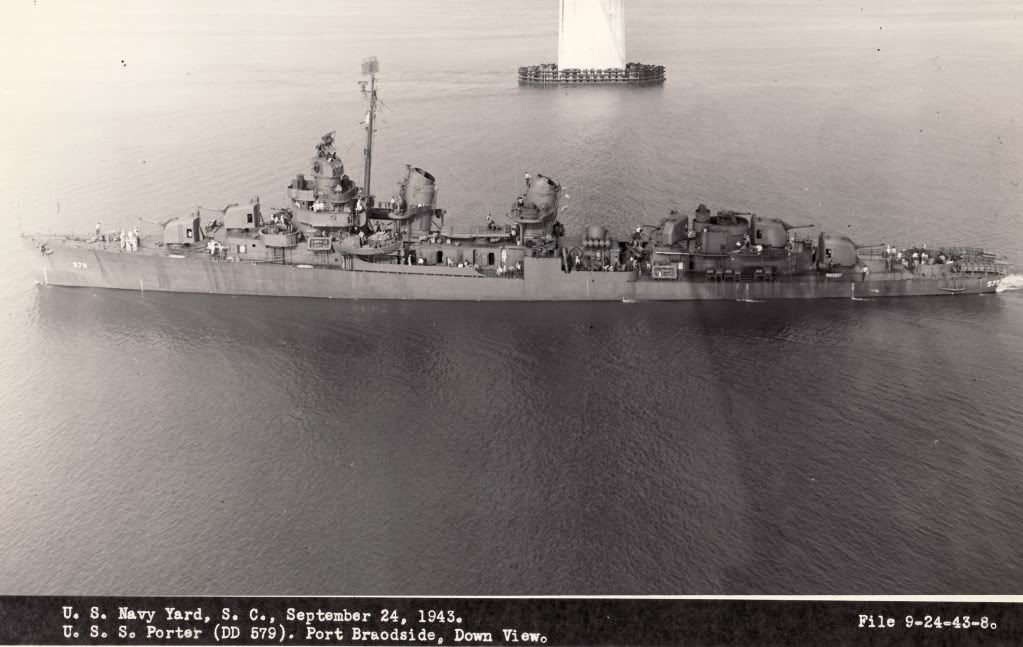Samee Ulhaq
FULL MEMBER
New Recruit
- Joined
- Dec 23, 2013
- Messages
- 81
- Reaction score
- 0
- Country
- Location

The USS William D. Porter sinks after she was near-missed by a "Kamikaze" suicide aircraft off the coast of Okinawa, Japan, June 10, 1945.
--------------------------------------------------------------------------------------------------------------------------------------
By TAHLIA Y. BURTON on June 10, 2016
The USS William D. Porter was a source of mayhem during its whole existence, including the time it nearly killed then-President Franklin D. Roosevelt.
The USS William D. Porter — “Willie Dee” to her crew — was a War World II destroyer, and is arguably the unluckiest ship in the history of the world. She lasted less than two years, until her ill-fated demise in June of 1945, according to a piece originally published in The Retired Officer Magazine by historian Kit Bonner in 1994.
The USS William D. Porter (DD-579) was one of the many war-built assembly line destroyers. Although the ships were small compared to modern-day destroyers, they were formidable forces in their time. Their main armament included 10 fast-running and accurate torpedoes that carried 500-pound warheads, but also included anti-aircraft artillery weapons.
The USS William D. Porter was commissioned on July 6th 1943 under the command of Lt. Cmdr. Wilfred A. Walter. In November of 1943, she was ordered to accompany the battleship Iowa on a secret mission across the Atlantic that the crew of the Porter was told nothing about. The crew members quickly learned its tasks and purposes before setting sail, but clearly wasn’t ready for its upcoming mission — a few days later, they almost killed the precious secret cargo aboard the Iowa — U.S. President Franklin D. Roosevelt, Secretary of State Cordell Hull, and many high-level U.S. military officers.
Built in the city of Orange, Texas, the William D. Porter was a Fletcher-class destroyer that was commissioned into the navy on July 6, 1943, under Lieutenant Commander Wilfred Walter. After several months of shakedown and other exercises, the ship was declared ready for war and was placed on its first mission, helping escort the president, Secretary of State, and Joint Chiefs of Staff across the Atlantic Ocean to the Tehran Conference.
On November 12th, they departed to join the fleet, but forgot to pull up the anchor and dragged it across the deck of another docked destroyer, destroying a good bit of valuable equipment.
The next day, a depth charge rolled off the deck and made the whole convoy think German submarines were attacking. A rogue wave also swept a man overboard, who was lost.
The next day, the battleship Iowa (with the president and other VIPs on board) conducted an anti-aircraft drill, shooting at balloons they released, and the Willie Dee (as the ship was so affectionately called) joined in. They also conducted a simulated torpedo launch. Here is a rough transcript of what happened next, recounted by Lieutenant H. Seward Lewis.
Torpedo Officer: Fire One. Fire Two. Fire Three.
(Whooshing sound, not unlike that of a torpedo accidentally being fired)
Lt. Lewis: Did you give permission to fire a torpedo?"
A sailor had forgotten to remove the primer from a torpedo, and said torpedo was now heading straight for the Iowa and President Roosevelt.
An understandable panic rose over the ship as the Porter attempted to signal the Iowa, but couldn't even get that right- first telling them there was a torpedo in the water, but going away from them, and then telling them the ship was reversing.
Finally the ship broke radio silence (which was a pretty big deal, given the number of U-boats running around in the Atlantic) to warn the Iowa. Roosevelt asked to be rolled out to the side of the ship to see the torpedo, while his bodyguard took out a pistol, preparing to shoot the torpedo if necessary. Fortunately, the Iowa turned fast enough to avoid the torpedo.
At this point, the Porter was no longer welcome in the convoy and was sent off to Bermuda, where the entire crew was arrested, the first time this had happened in U.S. Navy history. The crew would be greeted with shouts of “Don't shoot! We’re Republicans!” the rest of the war.
After the investigation, the ship was sent to the Aleutians, but quickly wore out its welcome by accidentally firing a shell into the front yard of the base commander. Finally sent to the Pacific, the ship finally had a chance to redeem itself.
After serving in the Philippines the Porter travelled to Okinawa. On June 10, 1945, the saga finally came to an end, when a Japanese kamikaze plane came soaring out of the sky and missed the ship, splashing into the ocean.
A few seconds later, having somehow ended up below the ship, the plane exploded.
The Porter sank after about three hours, her crew all escaping alive. Lieutenant Richard McCool received the Medal of Honor in part for his role in saving survivors from the sinking destroyer.
The ship was struck from the naval registry a month later, and the rest of the U.S. Navy could breathe a little easier.
*The invasion of Kiska, if you're curious.
**He survived, though one of the pilots did not.




